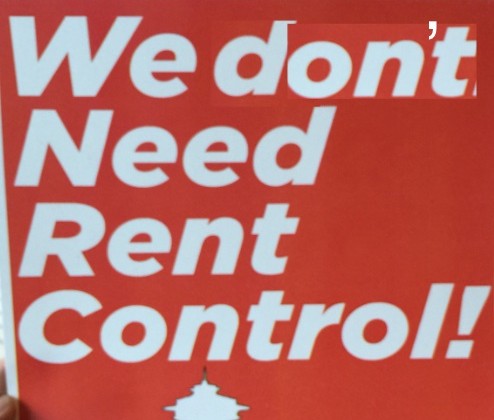44 Percent of Rental Units in Seattle Between 0-80 AMI Have Rent Restrictions
I have already pointed out before that rent control (really a price control) won’t work. Price controls never work to do the thing they are supposed to do: lower prices. And there is almost unanimity among economists who haven’t just speculated theoretically on the topic but studied it that rent control doesn’t work. But what might surprise many people in the discussion about rent control is that we already have restrictions on rental units in Seattle. Of the approximately 82,600 rental units identified by the Puget Sound Regional Council (PSRC) affordable to people earning 60 to 80 percent of Area Median Income (AMI), more than 36,000 or about 44 percent, have limits on rents. Those limits include how much rents can rise, income of tenants, and the resale of the building to other builders, and they last anywhere from 12 to 40 years.
How is this possible? There are many programs already working to keep rents under control for households that are earning less money. I’ve already written about the thousands of units are created efficiently and and lower costs by the Multifamily Tax Exemption (MFTE) Program and the City’s Housing Levy.
Multifamily Tax Exemption Program (MFTE)
The MFTE program grants a property tax exemption to housing projects that set aside at least 20 percent of its units for housing for people who earn between roughly 60 and 80 percent of AMI.
There are currently 4,369 units in the MFTE program. The total annual cost of the program in deferred property tax is $3.6 million. That means that, on average, an MFTE unit costs the city under $900 per year. [3]
Costs to Produce 1400 Units Using MFTE
- $860 X 1400 = $1,204,000
- Cost: $10 for a median valued single-family home per year[4]
Seattle’s Housing Levy
The Seattle Housing Levy is a property tax on all property in the City and generates funding for new housing, operations, and rehabilitation of existing affordable housing. The Levy typically funds housing for people who earn 0 to 60 percent of area median income. In 2013, the Levy produced 314 new housing units costing $13.4 million in Levy funds. Those funds were more than matched by other sources, including the largest source of capital, Low Income Housing Tax Credit equity; this enabled the City’s contribution to be $42,675 per unit.[5]
Costs to Produce 1400 Units Using Levy Funds
- Levy $42,675 x 1400 = $59,475,000
- Cost: $65 for a median valued single-family home per year[6]
So not only is rent control a famously bad idea, we’ve actually accomplished what it claims to be able to deliver: units priced affordably for poor families. Taken together the MFTE, Levy, the Seattle Housing Authority’s voucher program, and other programs like the Housing Trust Fund and Low Income Housing Tax Credit program are providing many, many rent restricted units at a low cost to tax payers. These programs can and should be expanded, and if we figure out how to build on City owned land using the City’s bonding authority we’ll add yet another useful tool to the community’s housing tool belt.
But rent control? We don’t need it. Linkage? Not necessary. Both are illegal, and both are inflationary. Let’s focus on things that are already making life easier for families trying to make ends meet in our city, not controversial, time wasting interventions that will actually make things worse for them and everyone else.


